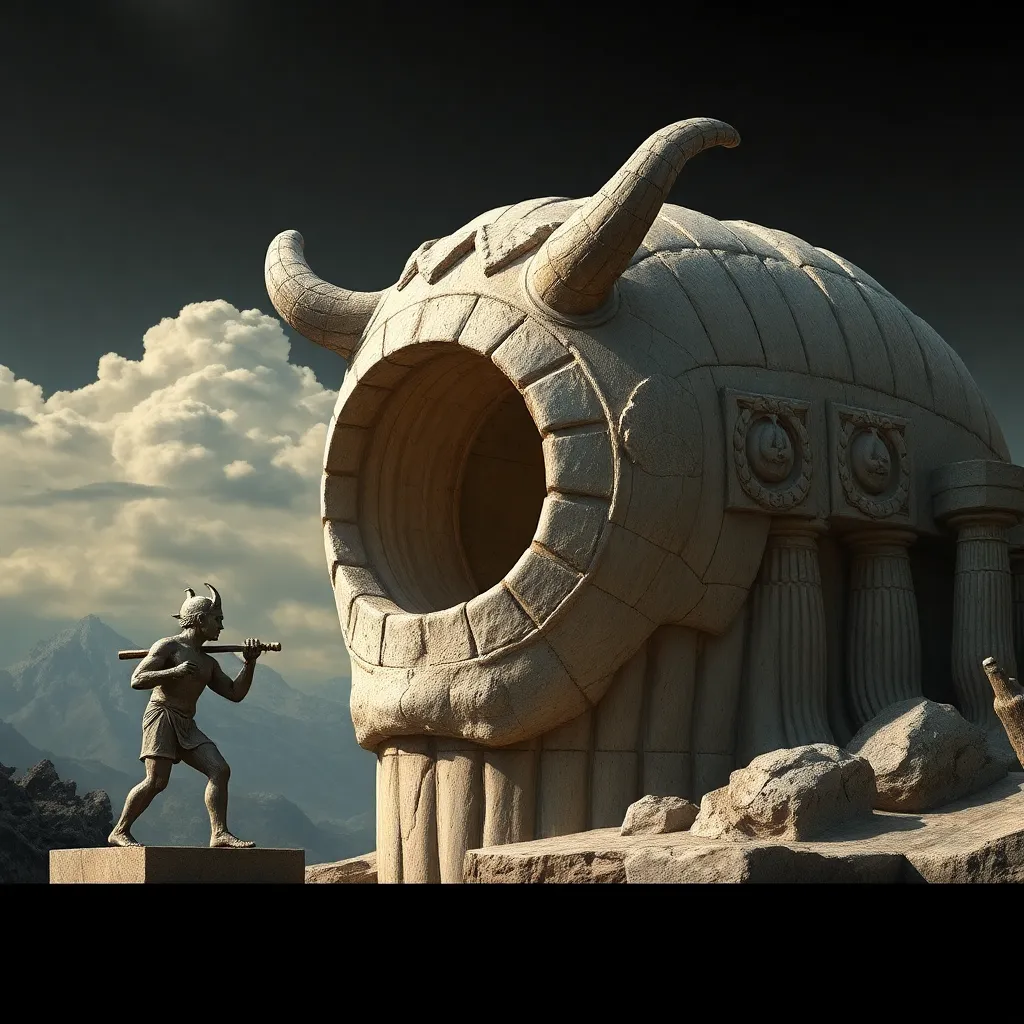The Cyclops and the Nature of Myth-Making in Ancient Greece
I. Introduction
The Cyclops, a one-eyed giant from Greek mythology, stands as one of the most iconic figures in ancient lore. Known primarily through Homer’s “Odyssey,” the Cyclops embodies themes of chaos, barbarism, and the clash between civilization and the wild. Ancient Greek culture is rich with myths that served not only as entertainment but also as a means to understand the world and human nature. This article aims to delve into the myth of the Cyclops, exploring its origins, themes, and its broader implications in the context of ancient Greek society.
II. The Origins of the Cyclops Myth
The origins of the Cyclops myth can be traced back to a blend of historical context and rich storytelling traditions that shaped ancient Greece. Archaeological findings suggest that the Cyclops may have been inspired by the remains of prehistoric creatures or large animals, leading to the conception of a giant with a singular eye.
- Historical context of Cyclopean mythology: The term “Cyclopean” refers to the massive stone structures found in Mycenaean architecture, which were thought to have been constructed by the Cyclopes themselves.
- Theories on origins: Scholars propose various theories based on archaeological findings and literary sources, including the possibility of the Cyclops being a metaphor for natural disasters or human fears.
Early references to Cyclopean beings appear in texts like Hesiod’s “Theogony,” where the Cyclopes are described as the sons of Uranus and Gaia, known for forging Zeus’s thunderbolts. This mythological context contextualizes the Cyclops within a larger narrative of divine conflict and creation.
III. The Cyclops in Homer’s “Odyssey”
Homer’s “Odyssey” presents one of the most famous episodes involving a Cyclops, specifically the encounter between Odysseus and Polyphemus. This narrative showcases the complexities of human interaction with the ‘Other’ and reflects ancient Greek values.
- Summary of the Cyclops episode: In the story, Odysseus and his men find themselves trapped in Polyphemus’s cave. The Cyclops, a shepherd and son of Poseidon, initially embodies the lawlessness of the wild. Odysseus cleverly devises a plan to escape by blinding Polyphemus, thus highlighting his wit and resourcefulness.
- Themes of hospitality and barbarism: The encounter emphasizes the Greek virtue of xenia, or hospitality, which Polyphemus violates by consuming Odysseus’s men. This act positions the Cyclops as a barbaric figure, contrasting with Odysseus’s civilized demeanor.
Moreover, the myth serves as a representation of chaos versus civilization, where the Cyclops symbolizes the primal forces that threaten order and societal norms.
IV. Symbolism and Interpretation of the Cyclops
The Cyclops has been interpreted through various lenses, representing not only physical might but also deeper societal fears and desires.
- The Cyclops as a symbol of the “Other”: In Greek society, the Cyclops represents those who are different or foreign, often depicting the tension between Greeks and non-Greeks.
- Reflections of human fears and desires: The solitary nature of the Cyclops may mirror human fears of isolation and the unknown, while his strength can symbolize the raw power of nature that humanity strives to control.
- Relation to the natural world: The unpredictable behavior of the Cyclops highlights humanity’s struggle against the chaos of nature, which is often perceived as hostile and unyielding.
V. The Role of Myth-Making in Ancient Greek Society
Myth-making was a fundamental aspect of ancient Greek culture, serving multiple purposes that extended beyond mere storytelling.
- Explaining natural phenomena: Myths provided explanations for natural occurrences, such as storms or earthquakes, often attributing them to the actions of gods or mythical creatures like the Cyclops.
- Cultural identity and social cohesion: Myths fostered a sense of shared identity among the Greeks, reinforcing communal values and beliefs.
- The process of myth-making: Oral traditions played a crucial role in the transmission and evolution of myths, allowing them to adapt through generations. Later literary adaptations, such as those by Homer and Hesiod, crystallized these stories into enduring narratives.
VI. The Evolution of the Cyclops Myth Through Time
The Cyclops myth has undergone significant transformations from its ancient origins to its portrayals in later literature and art.
- Depictions in later literature: In Roman mythology, for instance, the Cyclops were often portrayed as less menacing and more aligned with the gods, reflecting changing cultural attitudes.
- Influence on European mythology: The Cyclops myth influenced medieval and Renaissance literature, appearing in works that explore themes of isolation and power.
- Modern adaptations: Today, the Cyclops continues to inspire contemporary stories, from films to novels, often serving as a metaphor for various societal issues.
VII. The Cyclops and Contemporary Symbolism
The relevance of the Cyclops in modern literature and popular culture demonstrates the enduring legacy of myth-making.
- Relevance in modern literature: The Cyclops appears in various forms in contemporary works, often symbolizing isolation, power struggles, or the monstrous aspects of humanity.
- Metaphor in contemporary discussions: Discussions surrounding the Cyclops often touch on themes of alienation and the consequences of unchecked power, reflecting modern societal concerns.
- Enduring legacy: Myth-making remains a vital tool for understanding human experience, allowing societies to articulate complex emotions and moral dilemmas.
VIII. Conclusion
In summary, the myth of the Cyclops offers profound insights into the nature of myth-making in ancient Greece. It illustrates how myths served to explain the world, reinforce cultural identities, and explore the complexities of human nature. As we reflect on the significance of these ancient narratives, we find that their relevance extends into the modern world, providing a framework for understanding our own experiences and societal challenges.
The Cyclops, as a symbol of chaos, isolation, and the ‘Other,’ continues to resonate, reminding us of the timeless nature of myths in shaping cultural narratives and human understanding.




